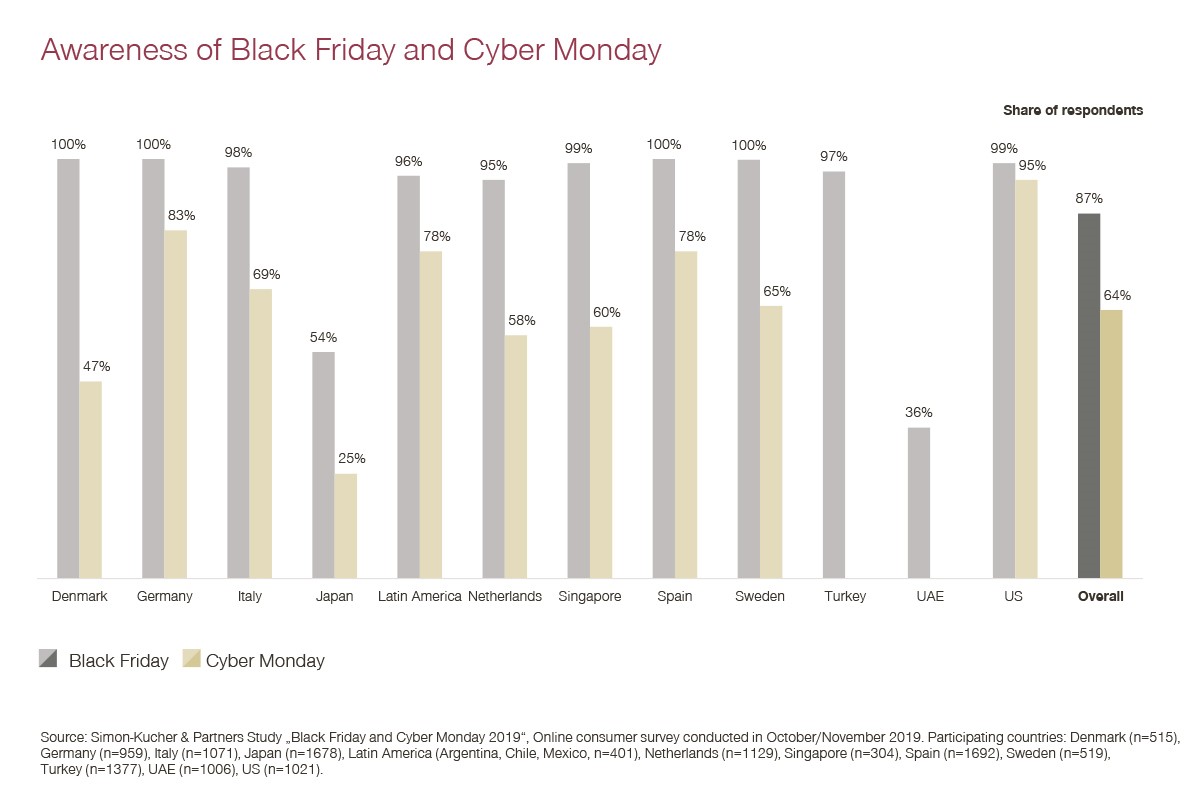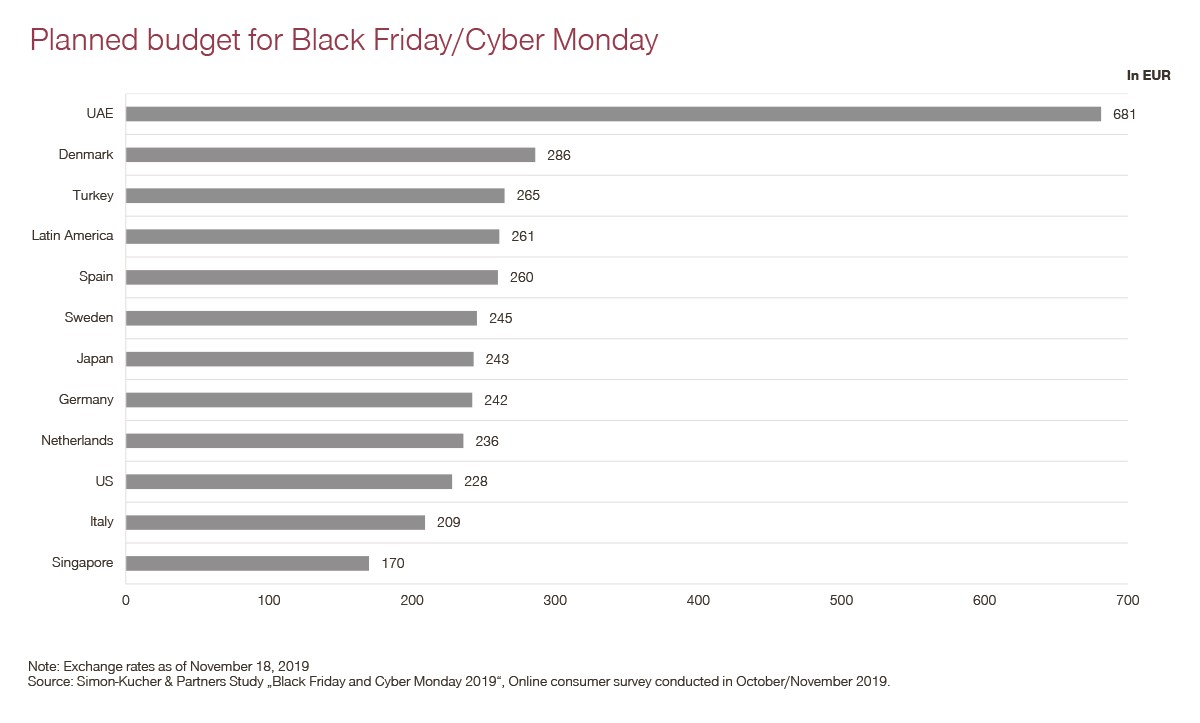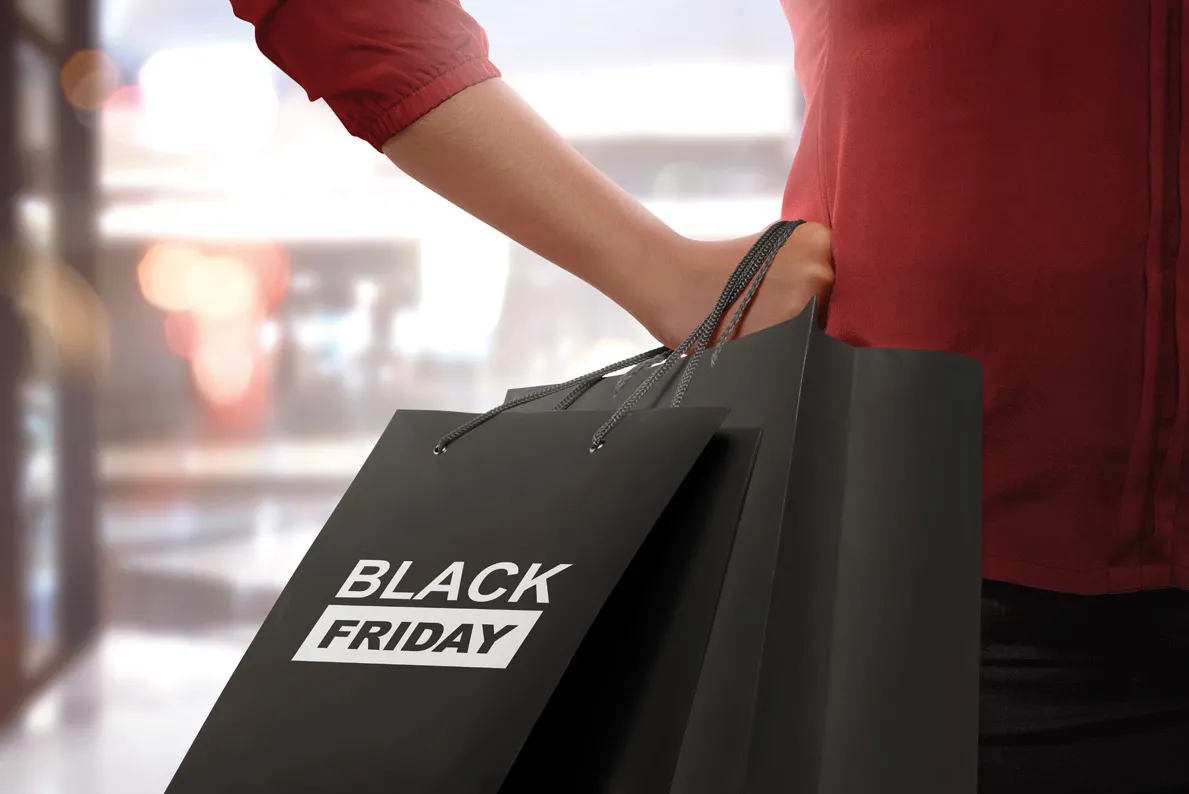Our recent survey reveals that many Black Friday and Cyber Monday sales volumes are just shifted, not gained. To truly increase sales, retailers need to be very strategic in how they offer discounts.
For many consumers worldwide (including myself) Black Friday and Cyber Monday mark the beginning of the holiday shopping season. At Simon-Kucher, we recently conducted an international study which shows that 87% of consumers are aware of Black Friday, and 64% aware of Cyber Monday. Both events strongly impact purchase behavior during the holiday season. As a consumer, I’m very excited. But as a pricing expert, the impact these discounts could have on retailers is worrying. Is Black Friday a positive way to drive sales, or does it do more damage than good?

Most people already have products in mind to buy on Black Friday – I know I have. Some look forward to the thrill of discovering new ideas and brands. Others have something specific sitting on a wish list, waiting for the price to drop. And with “pre” Black Friday deals hitting inboxes earlier every year, there are many who are reeled in before Friday even arrives. Competition between retailers is stronger than ever, as prices are dramatically cut to attract shoppers. But are companies really seeing an uplift in sales in the long term? And what do these heavy discounts mean for profits?
Black Friday and Cyber Monday are great excuses to spend money, especially with Christmas and New Year around the corner. However, several (if not all) of the purchases made during this time are items that consumers needed anyway. Here’s what my Black Friday shopping list looks like:
- A new winter coat
- Headphones as a gift for dad
- New luggage for work travel
- A replacement washing machine
- …
Rather than impulse purchases, these are actually things I already intended to buy – simply moved to this weekend to benefit from the dramatic reductions. And the results of our recent study tell me that I am not alone in my shopping patterns.
If your own shopping list looks somewhat similar to mine, you belong to the 60% of consumers who deliberately postpone or bring forward purchases in the hope of getting a good deal on Black Friday and Cyber Monday.
Our “Black Friday and Cyber Monday 2019” study reveals that the majority of purchases are indeed planned, and on average, 38% of consumers even plan their Black Friday shopping as far as 2-3 weeks in advance. The average consumer allocates a budget of 281 euros for the event. The reason for this targeted shopping? On average, 45% of the surveyed consumers expect discounts between 25% and 50%, an impressive 18% even expect price cuts of over 50%.

Reach out to Nina Scharwenka for the full study results. Country-specific results also available upon request.
While Black Friday and Cyber Monday might drive sales significantly for these few days, retailers may just be borrowing volumes from elsewhere. Previously, consumers accepted they would have to pay full price for their shopping in the build up to Christmas. However, Black Friday and Cyber Monday have conditioned consumers to expect reductions as early as November. For example, 51% of Danish, 48% of Swedish, and 35% of Spanish consumers plan to already shop for Christmas, which simply comes at the expense of lower sales in December.
Does Black Friday do more damage than good?
Black Friday and Cyber Monday can end up hurting retailers more than they help them, but these events don’t have to represent a double-edged sword. Special offers are still very important for sales, and are an effective way to attract customer attention. However, to avoid jeopardizing volumes for the rest of the year, retailers need to be very strategic in their Black Friday discounting approach. Here are three key takeaways for retailers to remember during one of the busiest shopping seasons of the year.
1. Develop a detailed promotion strategy
Don’t get caught up in the Black Friday trap by discounting too aggressively. Of course, in reality, skipping Black Friday is not an option. If all of your competitors are participating, you must too. Therefore it is even more important to plan discounts and promotions wisely, selectively, and as part of an overall retailer campaign. The depth that’s really required to trigger a purchase is often overestimated by retailers as they fight for traffic, and many end up giving too much away. Depending on the gravity of the discounts offered, surplus sales may not even compensate for the profit losses that lower prices cause. Flat-rate cuts such as "30 percent off everything" – or even more – are a no-go! These offers might catch the attention of potential customers, but retailers that offer these kind of discounts every Black Friday will find that 30% becomes the standard. For some retailers, it might even make sense to follow an “everything is discounted” approach, but this needs to be combined with an effective strategy applied throughout the year. It should incorporate factors such as product categories, roles, and other shopping events, and planning needs to be based on historical data and customer research to fully understand the positive and negative side effects of discounts at each level.
2. Differentiate discounts based on shopping behavior
Remember my Black Friday shopping list? At first glance, it seems quite straightforward, but look at the items individually and each has a different level of flexibility in terms of how a discount could influence my purchase behavior. For example, with winter approaching, I am looking for a new coat, and am open to ideas regarding brand, color, and style. Rather than 30% off everything, I would just as much appreciate being drawn to a small selection of items in the store. Plus, let’s be honest: I might also walk out with an accompanying scarf and handbag if the retailer makes the most of cross-selling opportunities and correctly positions its products to inspire me. But the headphones, on the other hand, were carefully selected months ago. I have cross-checked the specifications with multiple other brands and know exactly the model that I want to buy. Now I am just waiting for the price to drop. No amount of discounting could sway me to another option. If the chosen product is reduced by 30% I will be very satisfied, but if it is only reduced by 10%, I will still buy it anyway. The smart retailers out there will have already identified the different needs behind consumers’ purchases, and will differentiate their discount levels accordingly.
3. Offer a range of benefits beyond price
Retailers often assume that the higher the discount, the happier the customer. However, there are many other ways to run a successful promotion, and despite what many retailers think, not all consumers are focused on price. Giving away free samples, access to exclusive products, or even creating a unique atmosphere in your store (think a free glass of champagne, a prize for every 100 purchases, or a live DJ) can also be effective in driving traffic. These efforts are particularly appreciated in Japan, with 70% of consumers planning to shop fashion and lifestyle accessories due to a superior shopping experience. In combination with strategic product positioning and a differentiated discounting strategy, these techniques could be equally effective in other countries as well.
Remember: Stay strategic in the chaos!
During Black Friday it can seem like retailers have forgotten how to handle pricing and just enter a “set it, then forget it” discount rush. This is a dangerous mindset to have with promotions, and will not deliver the expected rewards when it comes to the annual sales and profit figures.
Retailers need to do their homework to understand who their customers are, the reasons behind purchases, and the acceptable upper and lower price limits. Shoppers may quickly forget what they spent on Black Friday and Cyber Monday, but for retailers, the impact can be felt during the entire year. To make sure the lasting impact is positive, retailers should conduct a detailed analysis of sales and transaction data before, during, and after Black Friday and Cyber Monday, then prepare a differentiated discount strategy that reflects their overall business goals.








